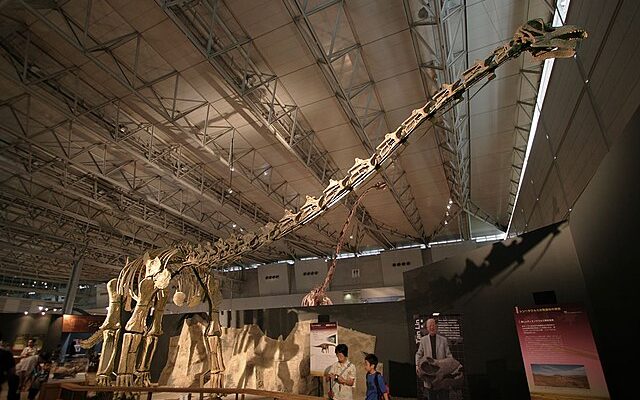
In 2022, Damien Boschetto went for a stroll in France with his dog when he stumbled upon a remarkable discovery, but he decided to keep it a secret.
Until now.
Esqueleto de dinossauro gigante de 70 milhões de anos é encontrado quase inteiro. #EuViNaPlanalto
Saiba mais ⤵https://t.co/pYckpiQtMB📸: Damien Boschetto // CNN Newsource pic.twitter.com/xc3sIS77d3
— Rádio Planalto News FM 92.1 (@rdplanalto) March 8, 2024
The 25-year-old was walking in the forests of Montouliers near his home in Cruzy, France, when he came across a fossil that turned out to be the remains of a 70-million-year-old dinosaur, writes The Independent.
“It happened one morning like any other, during an ordinary walk,” Mr Boschetto told local outlet France Bleu in February in a translated quote.
“While walking the dog, a landslide on the edge of the cliff exposed the bones of various skeletons.”
He kept his find a secret to allow for the dinosaur’s extraction to be done without the risk of being ruined by onlookers, he said.
“The territory around Cruzy is rich in fossils of dinosaurs and other species living at the same time,” Boschetto told ABC News in a translated statement. “For 28 years, Cruzy has been supplying and building one of the largest collections of dinosaur fossils from the Upper Cretaceous period in France.”
Boschetto, explained ABC News, has a “self-taught passion” for paleontology. He discovered the exposed bone fossils, which led to the excavation of a 70% complete, 30-foot-long fossilized titanosaur.
Titanosaurs were colossal long-necked dinosaurs belonging to the sauropod group, thrived during the Late Jurassic Epoch, roughly 163.5 million to 145 million years ago.
These colossal herbivores, epitomized by iconic species like Argentinosaurus and Dreadnoughtus, roamed diverse landscapes across the globe. Characterized by immense size and unique skeletal traits, Titanosaurs have left an indelible mark on paleontological studies. Fossilized remains unearthed from this era not only offer a glimpse into the astonishing scale of these creatures but also provide invaluable insights into the ancient ecosystems they inhabited.
“It happened one morning like any other, during an ordinary walk,” Boschetto told local FranceBleu in February. “While walking the dog, a landslide on the edge of the cliff exposed the bones of various skeletons.”
The skeleton has since been successfully relocated to the Cruzy Museum. The museum’s laboratory will now be the site of in-depth study on the specimen.









